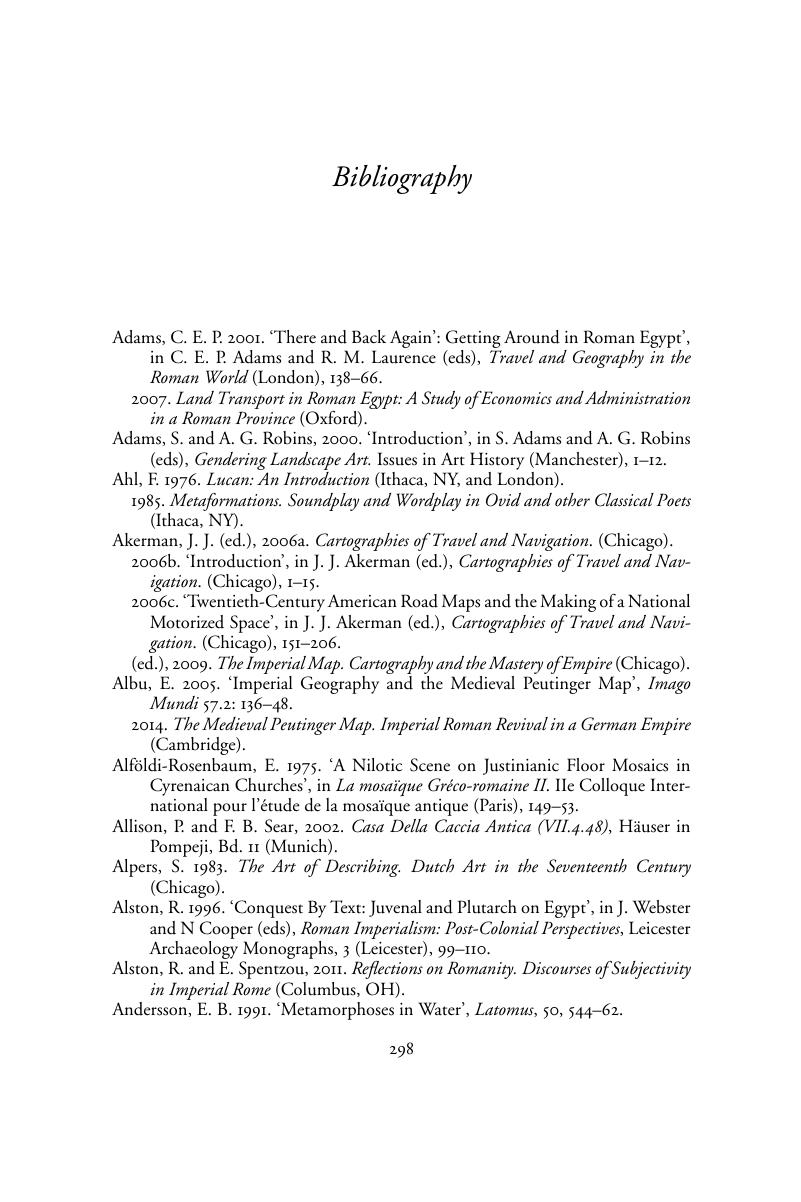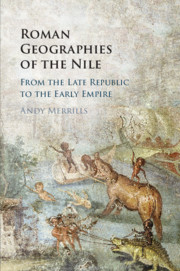Book contents
- Roman Geographies of the Nile
- Roman Geographies of the Nile
- Copyright page
- Dedication
- Contents
- Figures
- Acknowledgements
- Abbreviations
- Introduction
- Chapter 1 A World Full of Maps?
- Chapter 2 The Dismembered Nile
- Chapter 3 Gazing on the Nile
- Chapter 4 Creatio ex Nilo
- Chapter 5 This River Is a Jumbled Line, Perhaps?
- Chapter 6 Triumph and Disaster
- Afterword
- Bibliography
- Index
- References
Bibliography
Published online by Cambridge University Press: 23 February 2017
- Roman Geographies of the Nile
- Roman Geographies of the Nile
- Copyright page
- Dedication
- Contents
- Figures
- Acknowledgements
- Abbreviations
- Introduction
- Chapter 1 A World Full of Maps?
- Chapter 2 The Dismembered Nile
- Chapter 3 Gazing on the Nile
- Chapter 4 Creatio ex Nilo
- Chapter 5 This River Is a Jumbled Line, Perhaps?
- Chapter 6 Triumph and Disaster
- Afterword
- Bibliography
- Index
- References
Summary

- Type
- Chapter
- Information
- Roman Geographies of the NileFrom the Late Republic to the Early Empire, pp. 298 - 332Publisher: Cambridge University PressPrint publication year: 2017



